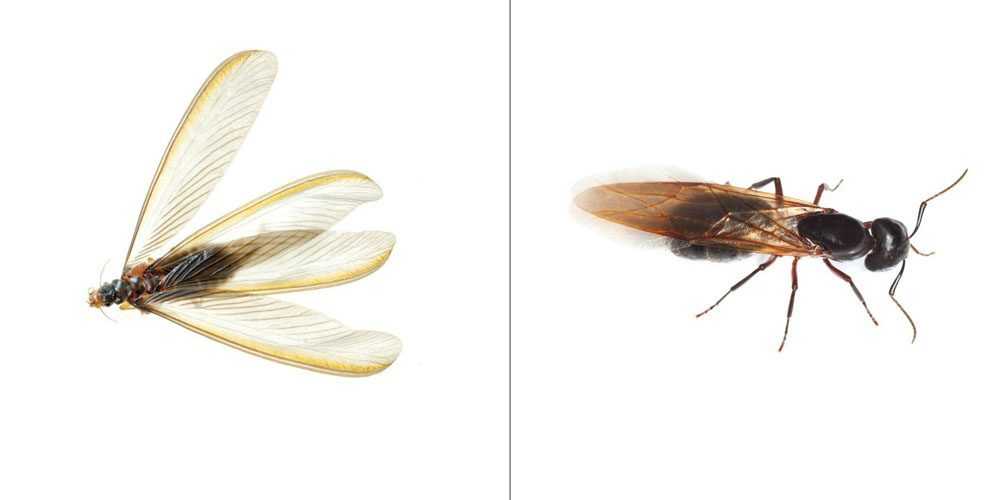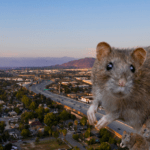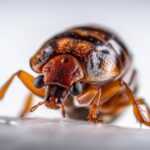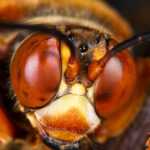Termite swarmers and flying ants look similar and both attack wood, but they aren’t the same pest. If you’re seeing winged pests near your home, it’s important that you correctly identify them so that you can treat the problem, appropriately. In this blog post, we’ll talk about the differences between termites vs flying ants and offer ways you can handle an infestation.
Winged Ants
Flying ants, also referred to as ant swarmers, have small waists, bent antennae, and two sets of wings — with the larger-sized wings located in the front. Flying ants are often seen in swarms, known as an ant swarm, when they develop wings and fly away to create new colonies once their existing one matures. One particular species of ants that mimic termites in terms of wood damage is the carpenter ant. Carpenter ants are typically black and larger than most ants in the Pacific Northwest.
‘Flying ant day’ is an annual phenomenon where winged ants swarm and take flight, typically in warm and humid conditions during the summer months.
Queens can range in size from 16 to 18 millimeters long, while workers range in size between 6 and 13 millimeters long. These winged swarmers will feed on seeds, nectar, insects, and any food you have in the home. If you notice flying ants inside your home, it is important to vacuum up any visible ants and seal up potential entry points to prevent future invasions.
Carpenter ant swarmers can be very destructive to wooden structures, furniture, and woodpiles. These pests don’t actually eat wood, they excavate it to expand their nests. They mostly favor moist or rotting wood but may also infest dry wood. Queen ants play a crucial role in the lifecycle of flying ants, as they chew off their wings after mating to establish new colonies.
Characteristics of Flying Ants vs. Termites
Flying ants and termites are often mistaken for one another due to their similar appearance. However, there are distinct characteristics that set them apart. Flying ants have a narrow waist, bent antennae, and large forewings with small hind wings. Termites, on the other hand, have a broad waist, straight antennae, and equal-sized wings. Additionally, flying ants are typically larger than termites, with some species reaching lengths of up to 15mm. By paying close attention to these physical traits, you can accurately identify whether you’re dealing with flying ants or termites.
The Role of Winged Ants in an Ant Colony
Winged ants, also known as alates, play a crucial role in the reproduction and expansion of an ant colony. These winged insects are produced by the queen and nurtured by worker ants within the colony. Once they reach maturity, winged ants leave the nest to mate and establish new colonies. This process ensures the survival and growth of the ant species, as new colonies are formed and genetic diversity is maintained. Without winged ants, the ant colony would not be able to expand and thrive.
Why Do Flying Ants Fly?
Flying ants take to the skies for a very specific reason: to mate and establish new colonies. This behavior is essential for the survival and expansion of the ant species. By flying, winged ants can travel long distances to find suitable locations for new colonies. Additionally, mating with ants from other colonies increases genetic diversity, which is crucial for the health and resilience of the species. When ants fly, they are participating in a natural process that ensures the continuation of their kind.
What is a Nuptial Flight?
A nuptial flight is a brief, once-in-a-lifetime mating period for winged ants. During this time, male and female ants fly together, mate, and establish new colonies. The nuptial flight is a critical phase in the life cycle of ants, as it ensures the continuation of the species. After mating, the male ants die, and the female ants drop their wings to start new colonies. This process not only facilitates reproduction but also helps in the dispersal of ants to new environments, promoting the spread of the species.
Termites and Termite Swarmers
Subterranean termites are the most destructive termite in the country and live throughout most of the continental US. Subterranean termite colonies are comprised of workers, soldiers, and of course, swarmers.
Worker Ants
Workers are typically cream-colored and wingless. They’re commonly present where infested wood is broken open or foraging mud tubes.
Soldiers
Soldiers are cream-colored and wingless like workers, but also have large brown heads. They defend the queen and colony from any outside threats using their large jaws.
Swarmers
Swarmers are nearly black and have two wings that are twice as long as their body. When a termite colony reaches its maximum capacity, termite swarmers develop wings and leave the colony to build a new one. Once they’ve found an ideal spot, they discard their wings and start chewing their way into the wood.
When is Flying Ant Day?
Keep an eye out for termite swarmers in the spring. Warm weather and a light breeze are perfect conditions for these traveling pests. If you leave windows open during the day, you may even find swarmers or their discarded wings in your house. If you suspect you have a developing termite issue, contact PURCOR.
Are termite swarmers attracted to light?
Absolutely. At night, termite swarmers will gather around streetlights and porch lights. In addition to being a nuisance while you try to enjoy an evening on the patio, termite swarmers drawn to your outdoor lights may also invite themselves inside.
How to Identify Flying Ants vs. Termites
Identifying flying ants and termites can be challenging, but there are several key differences to look out for. Flying ants have a narrow waist, bent antennae, and large forewings with small hind wings. Termites, on the other hand, have a broad waist, straight antennae, and equal-sized wings. Additionally, flying ants are typically larger than termites, with some species reaching lengths of up to 15mm. By examining the physical characteristics of the insects, you can determine whether you are dealing with flying ants or termites. This knowledge is crucial for implementing the correct pest control measures and protecting your property from damage.
How to Get Rid of Termite Swarmers or Ant Colonies
Termite swarmers tend to be present during early spring when it’s rainy and warm, while carpenter ant swarmers can appear any time of the year. Ants swarm primarily for protection from predators and to increase mating opportunities among their species. If you suspect you have termite or ant swarmers, or find signs of their damage on your property, you’ll want professional help. Both of these pests are highly destructive and resilient.
Flying insects, particularly flying ants, play a significant role in enhancing soil quality through their tunneling activities and serve as a crucial food source for various bird species.
Swarms of flying ants, known as alates, typically emerge and take flight during warm and humid weather, often causing public disruptions. This seasonal phenomenon is an annual spectacle occurring between June and September.
Ants of the same species can enhance genetic diversity between their colonies, which is crucial for successful mating and ensuring healthy populations.
Treatment options vary, and having a certified pest control technician develop a customized treatment plan for you will go a long way toward providing you peace of mind. Contact PURCOR to receive a free pest control estimate today!
"*" indicates required fields
"*" indicates required fields




